Opinion
Adikaram, a man like no other
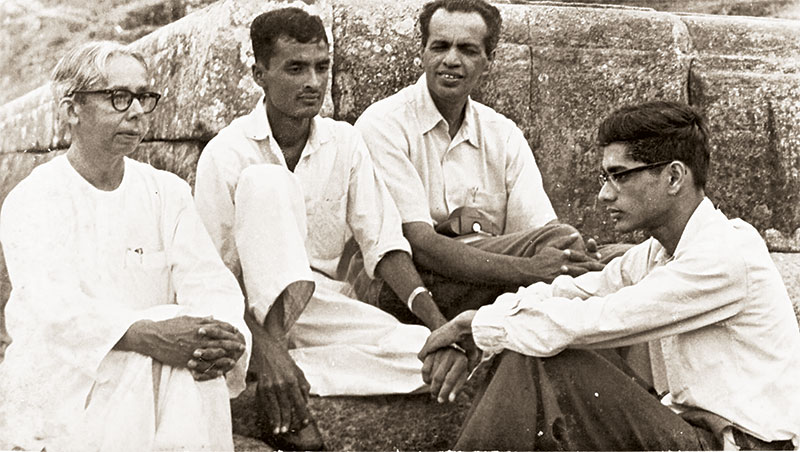
38th death anniversary of Dr E. W. Adikaram falls today
By Professor J.B. Disanayaka
It happened about sixty years ago. I was just a lad of seventeen, studying in grade eleven at Ananda College. As I walked past the small playground in the centre of the primary school premises, I caught the sight of a small-made man in our national dress, walking towards the Principal’s office. A senior whispered, “That’s Dr. Adikaram”. I had a good look at him, the new President of the BTS [Buddhist Theosophical Society], which looked after Ananda as the country’s main Buddhist educational institution.
I saw him again about ten years later, at the office of the Indian High Commission, where I had gone to get a visa to go to India to attend a religious conference in Darjeeling, organised by the Quakers, a society known for their opposition to violence and war. Dr. Adikaram was also there to get his visa to attend the very same meeting. It was my rare privilege to have a word with him. We left to India by air, from Ratmalana, on the full-moon day of Wesak, 1959.
That was rather a coincidence, I thought, to go to India, the land of the Buddha’s birth, on the full-moon day of Wesak, which celebrates three events of His life — the Birth, the Enlightenment and the Passing Away. At Madras, we boarded the Howrah Express to Calcutta. There were four of us, all on our way to the Conference: Dr. Adikaram, Chris Pullenayagam, Chitra Wijesinha and me. I had the rare chance to sit next to Dr. Adikaram and chat with him for two long days!
Some of what he said took me by surprise. I just could not understand him when he said that he had seen my ‘astral body’ on three or four occasions when he was reading in his study at his house in Pagoda. Being a Theosophist, he was able to explain to me about ‘astral bodies’ but I simply could not take his word. It was so strange. So, I requested him to write all that on paper and he promised to do so on his return to Sri Lanka. And he did. It ran to about four or five foolscap pages!
As he sat in his study at Pagoda, he saw the glimpse of someone walking into his house. He came out of the room but there was none. This happened on a few more occasions and as days went by, he got a faint glimpse of the face of this strange man. He told all his friends, including Dr. Mahinda Palihawadana, the Principal of Ananda Sastralaya, whom he met in the morning at Pagoda, to keep track of this strange character. However, they saw no one that fits his frame. On his return from the Indian High Commission, he told his friends, “Well, I saw that man today!”
Quakers had chosen one of the most beautiful sites for their Conference, in a bungalow overlooking Mount Kanchenjunga, one of the world’s highest mountains in the Himalayan range, bordering India and Nepal. We spent about a week listening to lectures and discussing matters of ethical interest — on how to build a world without barriers. On my return to the Island, I contributed an article to the University journal and it was titled, ‘A World Without Barriers’.
Later, he took me to Adayar in Madras to listen to J. Krishnamurti at Vasanta Vihar. Krishnamurti was a man of stature, both physically and spiritually. I listened to him in earnest and found that his words made a lot of sense. ‘Conditioning’ is the word that made all the difference. We are all ‘conditioned’ by the world around us so much so that we fail to see reality. Our beliefs and dogmas, rites and rituals prevent us from seeing reality and all that prevents us from living in peace.
I had the chance to discuss some of these matters in detail with him intimately when I came to Pagoda to translate into Sinhala his PhD thesis, ‘Early History of Buddhism in Ceylon’. It was a wonderful model of research based on the study of Pali texts. He also made me study Pali so that I could do a better Sinhala translation. He assured to me that studying Pali was fun because he himself learnt it only after his first year at the University College, giving up science and mathematics.
I spent my vacations at Pagoda in the early sixties translating his book, but unfortunately, I could not finish the work because I had to leave on a Fulbright scholarship to California in 1963. I think he himself completed the translation but never forgot to acknowledge my contribution in his Sinhala Preface. Only a few knew it because in the Preface my name appears as ‘Jayaratna Banda Disanayaka’ of the Department of Sinhala of the University of Ceylon, Peradeniya!
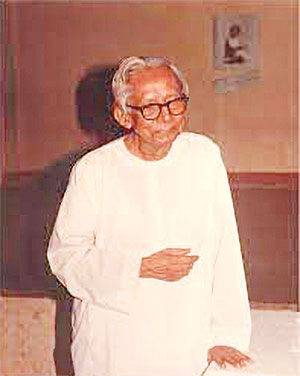
Dr. Adikaram
Conditioning’, as Krishnamurti says, prevents our mind from seeing reality. So, we wanted to look at the nature of the mind itself, and we did a couple of experiments. I was at the Peradeniya campus and he was at Pagoda. We decided to set off a time on a particular day of the week to think about something, like rivers, mountains, animals and plants and so on. At the agreed upon time, I spent about five minutes, thinking about something in particular and jotted it down on a piece of paper. He did the same thing in his study at Pagoda. I posted my note to him and he sent his note to me. On many an occasion we have thought about the very same thing! Now, isn’t that strange!
Minds can communicate. Some call it telepathy. It still happens to me almost every day. I am writing this note on the fifteenth of March 2021. Let me tell you about a few strange coincidences that took place last month. On the ninth day of February I wanted to find out a little more about the Sinhala word san nam (brand name) and I thought of calling Achintya Bandara, a young lecturer in the Sinhala Department, because he said the other day that I am the san nam of Sinhala linguistics. In fifteen minutes, my mobile rings. It was Acintya Bandara.
On the 10th, Dr. Malini Endagama of the Mahavamsa Editorial Board wanted me to translate its fifth chapter into English. I was not interested and she wanted me to suggest another name. I thought of my friend, Austin Fernando, who was the Secretary to the President under a previous government, and who has written a book in English, titled ‘My Belly is White’. However, I was unable to contact him because I do not have his telephone number. A couple of hours later, Austin rang me to find out the meaning of a Sinhala word. What a bit of luck!
On the 13th of February, I wanted to write a short note on the Sinhala word kana kaesbaeva (blind sea-turtle). Then rings my mobile. “Sir, my name is Unantenne. What does kana kaesbeva viya siduren balanava mean? “Why on earth were we both thinking of the same blind mythical animal at the same time? What does all this mean? That the mind is strange. It was Dr. Adikaram who made me think about the unimaginable ways of the human mind.
His booklets in the Sitivili (Thoughts) series were all about the ways of the world and the ways of the mind. He always posed questions and wanted you to answer them along with him. Do you think or does thinking occur to you? Why do we get angry when others scold you? What do dreams tell you? Are there layers in the mind — deep and surface? Can the end justify the means?
I liked his style of writing in Sinhala — simple and straightforward. When I compiled a handbook on the correct usage in Sinhala, in 2018, I chose him as one of the seven modern writers who have a style of their own and who deserve to be imitated. He was also one of the first to write on Modern Science in Sinhala. He edited the first science magazine in Sinhala, titled Navina Vidya . He compiled a small English-Sinhala glossary for school children to help them learn science in Sinhala.
He was a man, a bachelor, who loved not women but nature — birds and flowers. At Pagoda I observed, every morning, how he kept food for the birds and watered his flower plants. Occasionally, he would call me and say, “Look how this flower smiles at me”. He allowed mice to hang around the garage as they pleased. Once he did not drive his car for a week because there were new-born little mice in the dicky!
Dr. Adikaram was a vegetarian not because it was a considered a sin (pav) to kill animals. “Even if someone were to tell me that it is a merit (pin) to kill animals, I shall not kill simply because it hurts animals”. He never visited the zoo because they had to kill many animals to keep other animals alive. Prof. Mahinda Palihawadana is still a vegetarian doing his best to make this a world where not only human beings but all beings can live in peace.
My interest was not in birds and plants but in language and culture. However, he was able to shift my attention to plants when he took me, along with Siri Palihawadana, who had an expensive camera, to the Peradeniya Botanical Gardens, to take pictures of certain trees for his textbooks on science. We sat under the shade of many trees and enjoyed our meals at leisure.
The 28th of December 1985 was a strange day. I was at the University of Edinburgh on a Commonwealth scholarship to study Applied Linguistics. On many a day, I would stop by the University Bookshop on Buccleuch Place to buy a book usually on Linguistics. However, when I browsed the books on the 28th, my attention was drawn to a book on Krishmanmurti and I was delighted to have got my hands on it.
I went back to my room and was reading Krishmnamurti, always thinking of Dr. Adikaram, who introduced me to him at Vasantha Vihar in Adayar. My telephone rang and it was Siri Palihawadana. “JB, I have some bad news to tell you. Doctor passed away a few hours ago.” Now isn’t that strange? To buy a book on Krishnamurti and read it, as Dr. Adikaram lay in his death bed?
Siri and his wife Lakshmi looked after Dr. Adikaram with utmost care and affection. I remember that he had a nursery of sandal-wood plants at the backyard and they were distributed to those who loved plants. As I write this note in the library of my daughter’s house, near the Sri Jayewardenepura campus, I see the young sandalwood tree in her garden, gifted to her by Ravi Palihawadana. It brings back memories of an unforgettable past, when Dr. Adikaram moulded my way of thought and my way of life.
Dr. Adikaram was like no other because different people saw him in different ways. He was an orientalist, with his knowledge of Pali and Sanskrit, a historian, who recorded the History of Early Buddhism in Ceylon educator who was the Principal of a leading Buddhist school, Ananda Sastralaya in Kotte, founder of the leading Buddhist girls’ school in Nugegoda, Anula Vidyalaya, science writer, and philosopher who did his best to mould the minds of the young to create a world without barriers.
Opinion
Child food poverty: A prowling menace
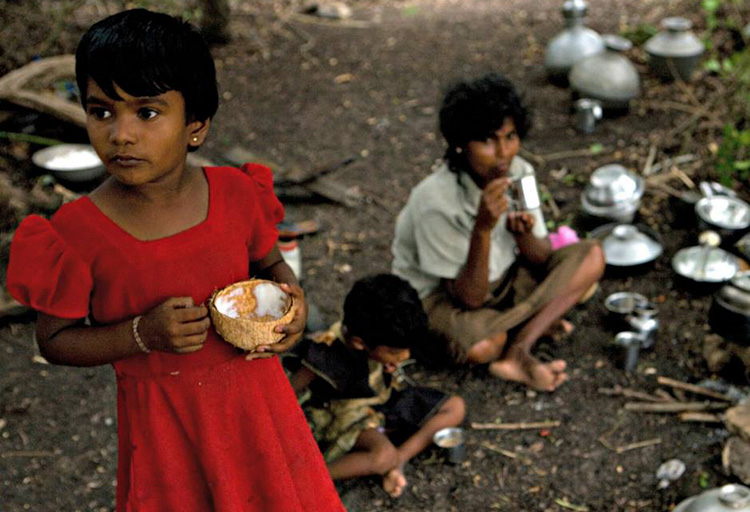
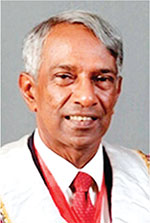 by Dr B.J.C.Perera
by Dr B.J.C.Perera
MBBS(Cey), DCH(Cey), DCH(Eng), MD(Paed), MRCP(UK), FRCP(Edin),
FRCP(Lon), FRCPCH(UK), FSLCPaed, FCCP, Hony FRCPCH(UK), Hony. FCGP(SL)
Specialist Consultant Paediatrician and Honorary Senior Fellow,
Postgraduate Institute of Medicine, University of Colombo, Sri Lanka.
Joint Editor, Sri Lanka Journal of Child Health
In an age of unprecedented global development, technological advancements, universal connectivity, and improvements in living standards in many areas of the world, it is a very dark irony that child food poverty remains a pressing issue. UNICEF defines child food poverty as children’s inability to access and consume a nutritious and diverse diet in early childhood. Despite the planet Earth’s undisputed capacity to produce enough food to nourish everyone, millions of children still go hungry each day. We desperately need to explore the multifaceted deleterious effects of child food poverty, on physical health, cognitive development, emotional well-being, and societal impacts and then try to formulate a road map to alleviate its deleterious effects.
Every day, right across the world, millions of parents and families are struggling to provide nutritious and diverse foods that young children desperately need to reach their full potential. Growing inequities, conflict, and climate crises, combined with rising food prices, the overabundance of unhealthy foods, harmful food marketing strategies and poor child-feeding practices, are condemning millions of children to child food poverty.
In a communique dated 06th June 2024, UNICEF reports that globally, 1 in 4 children; approximately 181 million under the age of five, live in severe child food poverty, defined as consuming at most, two of eight food groups in early childhood. These children are up to 50 per cent more likely to suffer from life-threatening malnutrition. Child Food Poverty: Nutrition Deprivation in Early Childhood – the third issue of UNICEF’s flagship Child Nutrition Report – highlights that millions of young children are unable to access and consume the nutritious and diverse diets that are essential for their growth and development in early childhood and beyond.
It is highlighted in the report that four out of five children experiencing severe child food poverty are fed only breastmilk or just some other milk and/or a starchy staple, such as maize, rice or wheat. Less than 10 per cent of these children are fed fruits and vegetables and less than 5 per cent are fed nutrient-dense foods such as eggs, fish, poultry, or meat. These are horrendous statistics that should pull at the heartstrings of the discerning populace of this world.
The report also identifies the drivers of child food poverty. Strikingly, though 46 per cent of all cases of severe child food poverty are among poor households where income poverty is likely to be a major driver, 54 per cent live in relatively wealthier households, among whom poor food environments and feeding practices are the main drivers of food poverty in early childhood.
One of the most immediate and visible effects of child food poverty is its detrimental impact on physical health. Malnutrition, which can result from both insufficient calorie intake and lack of essential nutrients, is a prevalent consequence. Chronic undernourishment during formative years leads to stunted growth, weakened immune systems, and increased susceptibility to infections and diseases. Children who do not receive adequate nutrition are more likely to suffer from conditions such as anaemia, rickets, and developmental delays.
Moreover, the lack of proper nutrition can have long-term health consequences. Malnourished children are at a higher risk of developing chronic illnesses such as heart disease, diabetes, and obesity later in life. The paradox of child food poverty is that it can lead to both undernutrition and overnutrition, with children in food-insecure households often consuming calorie-dense but nutrient-poor foods due to economic constraints. This dietary pattern increases the risk of obesity, creating a vicious cycle of poor health outcomes.
The impacts of child food poverty extend beyond physical health, severely affecting cognitive development and educational attainment. Adequate nutrition is crucial for brain development, particularly in the early years of life. Malnutrition can impair cognitive functions such as attention, memory, and problem-solving skills. Studies have consistently shown that malnourished children perform worse academically compared to their well-nourished peers. Inadequate nutrition during early childhood can lead to reduced school readiness and lower IQ scores. These children often struggle to concentrate in school, miss more days due to illness, and have lower overall academic performance. This educational disadvantage perpetuates the cycle of poverty, as lower educational attainment reduces future employment opportunities and earning potential.
The emotional and psychological effects of child food poverty are profound and are often overlooked. Food insecurity creates a constant state of stress and anxiety for both children and their families. The uncertainty of not knowing when or where the next meal will come from can lead to feelings of helplessness and despair. Children in food-insecure households are more likely to experience behavioural problems, including hyperactivity, aggression, and withdrawal. The stigma associated with poverty and hunger can further exacerbate these emotional challenges. Children who experience food poverty may feel shame and embarrassment, leading to social isolation and reduced self-esteem. This psychological toll can have lasting effects, contributing to mental health issues such as depression and anxiety in adolescence and adulthood.
Child food poverty also perpetuates cycles of poverty and inequality. Children who grow up in food-insecure households are more likely to remain in poverty as adults, continuing the intergenerational transmission of disadvantage. This cycle of poverty exacerbates social disparities, contributing to increased crime rates, reduced social cohesion, and greater reliance on social welfare programmes. The repercussions of child food poverty ripple through society, creating economic and social challenges that affect everyone. The healthcare costs associated with treating malnutrition-related illnesses and chronic diseases are substantial. Additionally, the educational deficits linked to child food poverty result in a less skilled workforce, which hampers economic growth and productivity.
Addressing child food poverty requires a multi-faceted approach that tackles both immediate needs and underlying causes. Policy interventions are crucial in ensuring that all children have access to adequate nutrition. This can include expanding social safety nets, such as food assistance programmes and school meal initiatives, as well as targeted manoeuvres to reach more vulnerable families. Ensuring that these programmes are adequately funded and effectively implemented is essential for their success.
In addition to direct food assistance, broader economic and social policies are needed to address the root causes of poverty. This includes efforts to increase household incomes through living wage policies, job training programs, and economic development initiatives. Supporting families with affordable childcare, healthcare, and housing can also alleviate some of the financial pressures that contribute to food insecurity.
Community-based initiatives play a vital role in combating child food poverty. Local food banks, community gardens, and nutrition education programmes can help provide immediate relief and promote long-term food security. Collaborative efforts between government, non-profits, and the private sector are necessary to create sustainable solutions.
Child food poverty is a profound and inescapable issue with far-reaching consequences. Its deleterious effects on physical health, cognitive development, emotional well-being, and societal stability underscore the urgent need for comprehensive action. As we strive for a more equitable and just world, addressing child food poverty must be a priority. By ensuring that all children have access to adequate nutrition, we can lay the foundation for a healthier, more prosperous future for individuals and society as a whole. The fight against child food poverty is not just a moral imperative but an investment in our collective future. Healthy, well-nourished children are more likely to grow into productive, contributing members of society. The benefits of addressing this issue extend beyond individual well-being, enhancing economic stability and social harmony. It is incumbent upon us all to recognize and act upon the understanding that every child deserves the right to adequate nutrition and the opportunity to thrive.
Despite all of these existent challenges, it is very definitely possible to end child food poverty. The world needs targeted interventions to transform food, health, and social protection systems, and also take steps to strengthen data systems to track progress in reducing child food poverty. All these manoeuvres must comprise a concerted effort towards making nutritious and diverse diets accessible and affordable to all. We need to call for child food poverty reduction to be recognized as a metric of success towards achieving global and national nutrition and development goals.
Material from UNICEF reports and AI assistance are acknowledged.
Opinion
Do opinion polls matter?
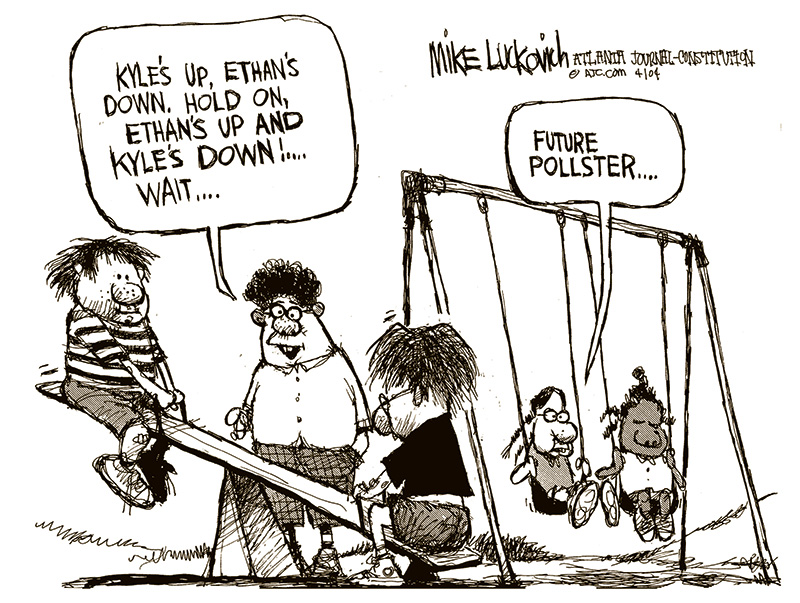
By Dr Upul Wijayawardhana
The colossal failure of not a single opinion poll predicting accurately the result of the Indian parliamentary election, the greatest exercise in democracy in the world, raises the question whether the importance of opinion polls is vastly exaggerated. During elections two types of opinion polls are conducted; one based on intentions to vote, published during or before the campaign, often being not very accurate as these are subject to many variables but exit polls, done after the voting where a sample tally of how the voters actually voted, are mostly accurate. However, of the 15 exit polls published soon after all the votes were cast in the massive Indian election, 13 vastly overpredicted the number of seats Modi’s BJP led coalition NDA would obtain, some giving a figure as high as 400, the number Modi claimed he is aiming for. The other two polls grossly underestimated predicting a hung parliament. The actual result is that NDA passed the threshold of 272 comfortably, there being no landslide. BJP by itself was not able to cross the threshold, a significant setback for an overconfident Mody! Whether this would result in less excesses on the part of Modi, like Muslim-bashing, remains to be seen. Anyway, the statement issued by BJP that they would be investigating the reasons for failure rather than blaming the process speaks very highly of the maturity of the democratic process in India.
I was intrigued by this failure of opinion polls as this differs dramatically from opinion polls in the UK. I never failed to watch ‘Election night specials’ on BBC; as the Big Ben strikes ‘ten’ (In the UK polls close at 10pm} the anchor comes out with “Exit polls predict that …” and the actual outcome is often almost as predicted. However, many a time opinion polls conducted during the campaign have got the predictions wrong. There are many explanations for this.
An opinion poll is defined as a research survey of public opinion from a particular sample, the origin of which can be traced back to the 1824 US presidential election, when two local newspapers in North Carolina and Delaware predicted the victory of Andrew Jackson but the sample was local. First national survey was done in 1916 by the magazine, Literary Digest, partly for circulation-raising, by mailing millions of postcards and counting the returns. Of course, this was not very scientific though it accurately predicted the election of Woodrow Wilson.
Since then, opinion polls have grown in extent and complexity with scientific methodology improving the outcome of predictions not only in elections but also in market research. As a result, some of these organisations have become big businesses. For instance, YouGov, an internet-based organisation co-founded by the Iraqi-born British politician Nadim Zahawi, based in London had a revenue of 258 million GBP in 2023.
In Sri Lanka, opinion polls seem to be conducted by only one organisation which, by itself, is a disadvantage, as pooled data from surveys conducted by many are more likely to reflect the true situation. Irrespective of the degree of accuracy, politicians seem to be dependent on the available data which lend explanations to the behaviour of some.
The Institute for Health Policy’s (IHP) Sri Lanka Opinion Tracker Survey has been tracking the voting intentions for the likely candidates for the Presidential election. At one stage the NPP/JVP leader AKD was getting a figure over 50%. This together with some degree of international acceptance made the JVP behave as if they are already in power, leading to some incidents where their true colour was showing.
The comments made by a prominent member of the JVP who claimed that the JVP killed only the riff-raff, raised many questions, in addition to being a total insult to many innocents killed by them including my uncle. Do they have the authority to do so? Do extra-judicial killings continue to be JVP policy? Do they consider anyone who disagrees with them riff-raff? Will they kill them simply because they do not comply like one of my admired teachers, Dr Gladys Jayawardena who was considered riff-raff because she, as the Chairman of the State Pharmaceutical Corporation, arranged to buy drugs cheaper from India? Is it not the height of hypocrisy that AKD is now boasting of his ties to India?
Another big-wig comes with the grand idea of devolving law and order to village level. As stated very strongly, in the editorial “Pledges and reality” (The Island, 20 May) is this what they intend to do: Have JVP kangaroo-courts!
Perhaps, as a result of these incidents AKD’s ratings has dropped to 39%, according to the IHP survey done in April, and Sajith Premadasa’s ratings have increased gradually to match that. Whilst they are level pegging Ranil is far behind at 13%. Is this the reason why Ranil is getting his acolytes to propagate the idea that the best for the country is to extend his tenure by a referendum? He forced the postponement of Local Governments elections by refusing to release funds but he cannot do so for the presidential election for constitutional reasons. He is now looking for loopholes. Has he considered the distinct possibility that the referendum to extend the life of the presidency and the parliament if lost, would double the expenditure?
Unfortunately, this has been an exercise in futility and it would not be surprising if the next survey shows Ranil’s chances dropping even further! Perhaps, the best option available to Ranil is to retire gracefully, taking credit for steadying the economy and saving the country from an anarchic invasion of the parliament, rather than to leave politics in disgrace by coming third in the presidential election. Unless, of course, he is convinced that opinion polls do not matter and what matters is the ballots in the box!
Opinion
Thoughtfulness or mindfulness?

By Prof. Kirthi Tennakone
ktenna@yahoo.co.uk
Thoughtfulness is the quality of being conscious of issues that arise and considering action while seeking explanations. It facilitates finding solutions to problems and judging experiences.
Almost all human accomplishments are consequences of thoughtfulness.
Can you perform day-to-day work efficiently and effectively without being thoughtful? Obviously, no. Are there any major advancements attained without thought and contemplation? Not a single example!
Science and technology, art, music and literary compositions and religion stand conspicuously as products of thought.
Thought could have sinister motives and the only way to eliminate them is through thought itself. Thought could distinguish right from wrong.
Empathy, love, amusement, and expression of sorrow are reflections of thought.
Thought relieves worries by understanding or taking decisive action.
Despite the universal virtue of thoughtfulness, some advocate an idea termed mindfulness, claiming the benefits of nurturing this quality to shape mental wellbeing. The concept is defined as focusing attention to the present moment without judgment. A way of forgetting the worries and calming the mind – a form of meditation. A definition coined in the West to decouple the concept from religion. The attitude could have a temporary advantage as a method of softening negative feelings such as sorrow and anger. However, no man or woman can afford to be non-judgmental all the time. It is incompatible with indispensable thoughtfulness! What is the advantage of diverting attention to one thing without discernment during a few tens of minute’s meditation? The instructors of mindfulness meditation tell you to focus attention on trivial things. Whereas in thoughtfulness, you concentrate the mind on challenging issues. Sometimes arriving at groundbreaking scientific discoveries, solution of mathematical problems or the creation of masterpieces in engineering, art, or literature.
The concept of meditation and mindfulness originated in ancient India around 1000 BCE. Vedic ascetics believed the practice would lead to supernatural powers enabling disclosure of the truth. Failing to meet the said aspiration, notwithstanding so many stories in scripture, is discernable. Otherwise, the world would have been awakened to advancement by ancient Indians before the Greeks. The latter culture emphasized thoughtfulness!
In India, Buddha was the first to deviate from the Vedic philosophy. His teachers, Alara Kalama and Uddaka Ramaputra, were adherents of meditation. Unconvinced of their approach, Buddha concluded a thoughtful analysis of the actualities of life should be the path to realisation. However, in an environment dominated by Vedic tradition, meditation residually persisted when Buddha’s teachings transformed into a religion.
In the early 1970s, a few in the West picked up meditation and mindfulness. We Easterners, who criticize Western ideas all the time, got exalted after seeing something Eastern accepted in the Western circles. Thereafter, Easterners took up the subject more seriously, in the spirit of its definition in the West.
Today, mindfulness has become a marketable commodity – a thriving business spreading worldwide, fueled largely by advertising. There are practice centres, lessons onsite and online, and apps for purchase. Articles written by gurus of the field appear on the web.
What attracts people to mindfulness programmes? Many assume them being stressed and depressed needs to improve their mental capacity. In most instances, these are minor complaints and for understandable reasons, they do not seek mainstream medical interventions but go for exaggeratedly advertised alternatives. Mainstream medical treatments are based on rigorous science and spell out both the pros and cons of the procedure, avoiding overstatement. Whereas the alternative sector makes unsubstantiated claims about the efficacy and effectiveness of the treatment.
Advocates of mindfulness claim the benefits of their prescriptions have been proven scientifically. There are reports (mostly in open-access journals which charge a fee for publication) indicating that authors have found positive aspects of mindfulness or identified reasons correlating the efficacy of such activities. However, they rarely meet standards normally required for unequivocal acceptance. The gold standard of scientific scrutiny is the statistically significant reproducibility of claims.
If a mindfulness guru claims his prescription of meditation cures hypertension, he must record the blood pressure of participants before and after completion of the activity and show the blood pressure of a large percentage has stably dropped and repeat the experiment with different clients. He must also conduct sessions where he adopts another prescription (a placebo) under the same conditions and compares the results. This is not enough, he must request someone else to conduct sessions following his prescription, to rule out the influence of the personality of the instructor.
The laity unaware of the above rigid requirements, accede to purported claims of mindfulness proponents.
A few years ago, an article published and widely cited stated that the practice of mindfulness increases the gray matter density of the brain. A more recent study found there is no such correlation. Popular expositions on the subject do not refer to the latter report. Most mindfulness research published seems to have been conducted intending to prove the benefits of the practice. The hard science demands doing the opposite as well-experiments carried out intending to disprove the claims. You need to be skeptical until things are firmly established.
Despite many efforts diverted to disprove Einstein’s General Theory of Relativity, no contradictions have been found in vain to date, strengthening the validity of the theory. Regarding mindfulness, as it stands, benefits can neither be proved nor disproved, to the gold standard of scientific scrutiny.
Some schools in foreign lands have accommodated mindfulness training programs hoping to develop the mental facility of students and Sri Lanka plans to follow. However, studies also reveal these exercises are ineffective or do more harm than good. Have we investigated this issue before imitation?
Should we force our children to focus attention on one single goal without judgment, even for a moment?
Why not allow young minds to roam wild in their deepest imagination and build castles in the air and encourage them to turn these fantasies into realities by nurturing their thoughtfulness?
Be more thoughtful than mindful?












